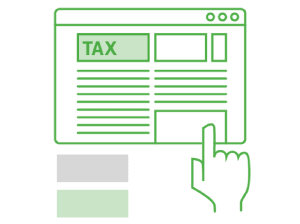Steuerentlastung für Robotisierung ist ein steuerlicher Anreiz zum Kauf von Industrierobotern für Unternehmer. Die Begünstigten erhalten einen Vorteil in Form des Rechts, die Körperschaftsteuerbemessungsgrundlage um förderfähige Aufwendungen für Robotisierung zu mindern. Wichtig ist, dass die Voraussetzung für die Inanspruchnahme der Entlastung nicht darin besteht, FuE-Aktivitäten durchzuführen, eigenständig Roboter zu entwickeln und zu bauen oder an einem speziellen Wettbewerbsverfahren teilzunehmen.
Der Abzug im Rahmen der Entlastung darf 50 % der angefallenen förderfähigen Aufwendungen nicht überschreiten und der Abzugsbetrag darf nicht höher als das jährliche Betriebsergebnis des Steuerpflichtigen sein.
Interessanterweise hat der Gesetzgeber die Möglichkeit der Inanspruchnahme der Steuerentlastung für Robotisierung eingeschränkt – dies wird nur bis zum Ende des Steuerjahres, das 2026 beginnt, möglich sein. Wichtige Information ist jedoch, dass sich die Behörden derzeit einig sind, dass die Entlastung auch für Abschreibungen auf Roboter, die von den Steuerpflichtigen auch vor 2022 – also noch vor der Einführung dieser Steuerentlastung – erworben wurden, gilt.
The definition of an industrial robot is key for the relief. It is an automatically controlled, programmable, multi-purpose and stationary or mobile machine, with at least three degrees of freedom, having handling or locomotion characteristics for industrial use, which meets all of the following conditions:
- exchanges data in digital form with control and diagnostic or monitoring devices for remote: control, programming, monitoring or diagnosing;
- is connected to ICT systems that streamline the taxpayer's production processes, in particular with production management, planning or product design systems;
- is monitored by sensors, cameras or other similar devices;
- is integrated with other machines in the taxpayer's production cycle.
The relief covers expenses incurred for the purchase of brand new robots as well as machines and peripherals functionally related to them. As part of the robotization relief, the taxpayer will also be able to deduct expenses for training staff in the use of robots and the purchase of software necessary for their operation. Importantly, only industrial robots are eligible for the relief.
The eligible costs, i.e. expenses incurred for robotization, which will be deductible from the tax base, include:
- The costs of acquiring brand new:
- industrial robots;
- machines and peripherals for industrial robots functionally related to them;
- machines, devices and other equipment functionally related to industrial robots that increase ergonomics and work safety at workstations where human interaction with an industrial robot takes place. In particular, we will classify all kinds of sensors, controllers, relays, safety locks, physical barriers (fences, shields) and optoelectronic protective devices (such as light curtains and area scanners) into this group of devices;
- machines, devices or systems for remote management, diagnosis, monitoring or servicing of industrial robots, in particular sensors and cameras;
- devices for interaction between a human and a machine falling within the definition of an industrial robot.
- The costs of acquiring intangible assets, which are necessary for the correct setup and commissioning of industrial robots and other fixed assets listed in clause 1.;
- the costs of purchasing training services thematically related to industrial robots and the costs of other fixed assets or intangible assets referred to in clauses 1 and 2;
- the fees that have been fixed in the leasing contract for industrial robots and other fixed assets listed in clause 1. - if after the end of the basic period of the leasing contract, the financing party transfers the ownership of these fixed assets to the lessee.
The sale of a fixed or intangible asset (included as part of robotization costs) - if it took place before the end of its depreciation period - forces the taxpayer to return the previously deducted robotization relief amount. Similarly regulated is the situation of the sale of the object of a leasing contract by a taxpayer before the end of its basic period.

Überzeugen Sie sich, wie wir Sie unterstützen können.
Unsere Steuerberater sind mit dem Steuerentlastungssystem bestens vertraut und bieten Ihnen eine umfassende Unterstützung
Die Spezialisten von RSM Poland haben Erfahrung in der Beratung zu Steuerentlastungen für Robotisierung. Dadurch bieten wir Unternehmern eine umfassende Unterstützung bei der Umsetzung der Entlastung, die u.a. Folgendes umfasst:
- Überprüfung der durchgeführten oder geplanten Investition;
- Bestimmung der förderfähigen Aufwendungen und Unterstützung bei ihrer Abrechnung;
- Analyse von Unterlagen, die den Anspruch auf die Steuerentlastung begründen, Erfüllung der verbleibenden formellen Verpflichtungen;
- Beantragung der Erteilung eines Steuervorbescheids, um die Umsetzung der Steuerentlastung maximal zu gewährleisten;
Prüfen Sie, ob eine Steuerentlastung für Robotisierung für Ihr Unternehmen gilt. Nutzen Sie das Wissen und die Erfahrung der Experten von RSM Poland und gewinnen Sie einen Teil der Aufwendungen, die Ihnen für die Robotisierung angefallen sind, zurück.
Sprechen Sie uns an!
Füllen Sie das Formular aus und einer unserer Experten wird sich in Kürze mit Ihnen in Verbindung setzen.




